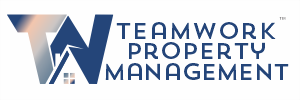
Investing in rental properties can be a lucrative way to generate passive income, but many landlords underestimate the hidden costs that come with property ownership. Beyond the mortgage, taxes, and insurance, there are several unexpected expenses that can impact your bottom line. Here are some hidden costs of owning a rental property that every investor should consider.
1. Maintenance and Repairs
Even with a newer property, maintenance and repairs are inevitable. From leaky faucets to HVAC failures, routine upkeep can add up quickly. Older properties may require larger repairs, such as roof replacements or plumbing updates, which can be costly if not budgeted for in advance. Regular inspections and preventative maintenance can help reduce the risk of unexpected expenses.
2. Property Management Fees
If you don’t want to handle tenant screening, maintenance requests, or rent collection yourself, hiring a property manager is a smart choice. However, management fees typically range from 8-12% of the monthly rent, plus additional charges for leasing, inspections, or emergency calls. While this is an added expense, a good property manager can help maximize occupancy rates and ensure a hassle-free rental experience.
3. Vacancy Costs
When a rental property sits empty, landlords still have to cover mortgage payments, taxes, insurance, and utility costs. Marketing the property, screening tenants, and preparing it for the next renter all take time, meaning you could lose income during turnover periods. Having a reserve fund to cover vacancies is crucial for maintaining cash flow.
4. HOA Fees and Special Assessments
If your rental property is in a community with a homeowners’ association (HOA), monthly fees can be an ongoing cost. Additionally, special assessments for unexpected community-wide repairs, such as repaving roads or replacing roofs, can add to your expenses. Always review HOA rules and financials before purchasing a rental property.
5. Legal Fees and Evictions
Tenant disputes, lease violations, or evictions can lead to legal expenses that landlords may not anticipate. If you need to hire an attorney for lease enforcement or eviction proceedings, costs can add up quickly. Having a solid lease agreement and conducting thorough tenant screenings can help reduce legal issues down the road.
6. Insurance and Liability Costs
Standard homeowner’s insurance may not provide enough coverage for rental properties. Landlord insurance is essential for protecting against tenant-related damages, liability claims, and loss of rental income due to property damage. If your rental is in an area prone to flooding or hurricanes, additional policies like flood insurance may be required.
7. Pest Control and Lawn Care
Keeping a rental property in top condition often requires ongoing pest control and landscaping services. Termites, rodents, and other pests can cause serious damage if left unchecked, leading to costly repairs. Lawn maintenance may also be necessary to comply with HOA rules or city regulations, adding another expense for landlords.
How to Prepare for Hidden Costs
To protect your investment and maintain profitability, consider these tips:
- Set Aside a Reserve Fund: A general rule is to save at least 1-2% of the property’s value annually for unexpected expenses.
- Schedule Regular Inspections: Preventative maintenance can help avoid costly emergency repairs.
- Factor in Long-Term Costs: When setting rent prices, account for property management fees, repairs, and vacancies.
- Get the Right Insurance: Ensure you have landlord insurance and additional coverage if necessary.
Owning a rental property can be a rewarding investment, but being aware of the hidden costs can help landlords avoid financial surprises. By planning ahead and budgeting wisely, investors can maximize their rental income while keeping expenses under control.
